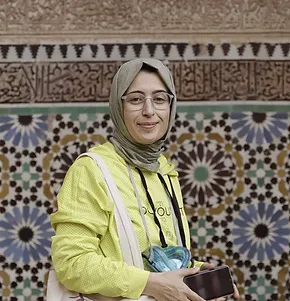Islamic Geometry
Islamic geometry, also known as Islamic geometric design or Islamic pattern, is a distinctive form of geometric art and design that is closely associated with Islamic culture and architecture. It features intricate geometric patterns and motifs that are often used to decorate mosques, madrasas, palaces, and other Islamic buildings. Islamic geometry has a strong connection to Islamic calligraphy and shares an emphasis on the use of mathematics, symmetry, and repetition to create visually stunning and harmonious designs. Here are some key aspects of Islamic geometry:
Mathematical Precision: Islamic geometric patterns are based on rigorous mathematical principles, particularly geometry. These patterns are often constructed using compass and straightedge constructions, and they rely on principles such as tessellation, symmetry, and proportion.
Symmetry: Symmetry is a fundamental aspect of Islamic geometric design. Patterns are often symmetrical, with different elements of the design mirroring each other. Common types of symmetry used include radial symmetry (rotational symmetry) and translational symmetry.
Repetition: Repetition of geometric shapes or motifs is a common feature in Islamic geometry. Shapes like circles, squares, stars, polygons, and intricate tilework are repeated to create larger, complex patterns. This repetition creates a sense of unity and continuity in the design.
Calligraphic Integration: Islamic geometric patterns are often combined with Islamic calligraphy, blending beautifully crafted Arabic script with intricate geometric designs. This integration can be found in various forms, such as inscriptions in decorative borders.
Historical Roots: Islamic geometric design has a long history, dating back to the Islamic Golden Age (roughly from the 8th to the 13th century). It was developed and refined by scholars, mathematicians, and artisans in various regions of the Islamic world, including the Arab world, Persia, and Spain.
Architectural Application: Islamic geometric patterns are commonly used to adorn architectural elements, including domes, arches, minarets, and courtyards in Islamic buildings. These patterns are also used on interior surfaces, such as walls and ceilings.
Regional Variations: Different regions within the Islamic world have developed their own unique styles and variations of Islamic geometry. For example, the patterns in Persian and Mughal Islamic architecture may differ from those found in Moroccan or Andalusian Islamic architecture.
Spiritual and Symbolic Significance: Islamic geometric design is often associated with deeper philosophical and spiritual meanings, reflecting concepts of unity, infinity, and the interconnectedness of the universe. Some patterns have symbolic representations, while others are simply expressions of the beauty of creation.
Islamic geometric design remains a vibrant and influential art form, and it continues to be appreciated and studied in both historical and contemporary contexts. These designs showcase the profound mathematical and artistic achievements of Islamic culture while serving as a testament to the connection between mathematics, art, and spirituality in the Islamic world.
Educational Materials
-
Original price was: $50.$40Current price is: $40. Select options This product has multiple variants. The options may be chosen on the product page
-
$16 – $40 Select options This product has multiple variants. The options may be chosen on the product page











